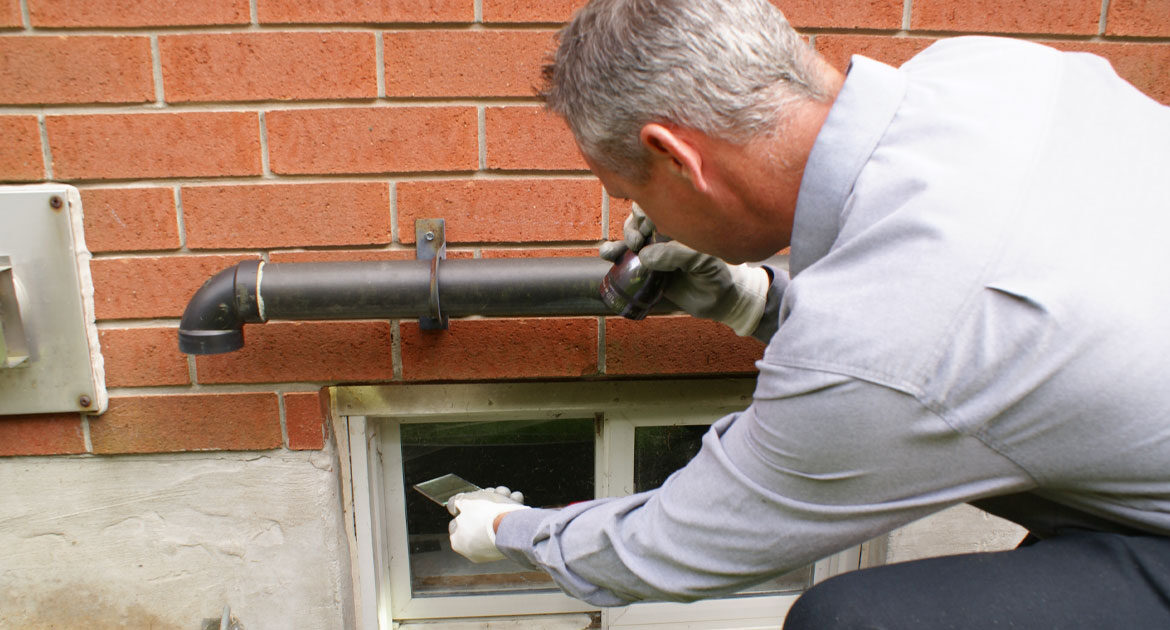Mice and other wildlife have insidious ways of getting into your home and causing structural damage, chewed wiring and even health hazards. Fortunately, there are ways to keep furry critters outside where they belong. By safeguarding these common wildlife entry points, you can avoid costly repairs and dangerous diseases.
Under the Porch
Animals love to nest or burrow under porches and decks because they’re dark and protected from the weather. The space under your porch looks ideal to a mother looking for a safe place to bear young. Unfortunately, once wildlife gets settled in, it’s difficult to get them out.
To prevent unwanted guests, you can make the space less appealing by removing latticework. With more sunlight and airflow, the area won’t feel as safe for nesting animals.
If moisture isn’t too much of an issue, you can take the opposite approach and block off the crawlspace. It’s best to use patio blocks or other stones, as most animals can chew through wood. If you create a barrier, you may also need to dig a trench or sink the barrier into the ground to prevent burrowing.
Into the Chimney
Birds and squirrels can enter your home through the chimney, even if you use it regularly. Of course, you can’t block this space as you would your deck since you need good airflow for your fireplace. Instead, you can keep critters out with a top-sealing damper, which allows you to seal and unseal the chimney as needed.
A chimney cap is another excellent option. While dampers rest inside the flue, caps sit several inches above it. Additionally, chimney caps are fixed, so there’s no need to worry about opening them before lighting a fire. To ensure good airflow while keeping wildlife at bay, most experts install mesh between the top of the flue and the cap.
In the Attic
Your rooftop may also be a point of entry for wild animals, especially if you have trees. Trim branches to prevent them from getting too close to your house, and eliminate climbing plants on exterior walls. That way, critters don’t have a bridge to your eaves.
Additionally, you should regularly clean your gutters. Clogged gutters can create standing water on your roof, rotting the wood and making it easier for wildlife to get inside.
Through Walls
How does wildlife enter the home when your porch is protected, your chimney is fortified and your roof is secured? The answer is the walls.
Rats, mice and squirrels are infamous for chewing through construction materials:
- Aluminum
- Rubber
- Plastic
Rodents have incredible teeth that never stop growing, allowing them to carve through tough substances. In fact, these animals are naturally driven to chew, as failure to wear down their teeth can lead to serious health issues.
Unfortunately, it can be difficult to tell if you have wildlife in your walls, as the signs aren’t apparent until you have a severe problem. For example, a large infestation will eventually start to smell as rodents die, attracting insects and producing dangerous bacteria.
To protect your walls from wildlife entry, avoid stacking firewood near the exterior, as these piles create the perfect hiding spots for small animals. Also, don’t store pet food, trash bins or other food sources near your walls. This goes for water as well, since both will attract wildlife.
Through Vents
Vents act as easy pathways into our homes for wildlife. Mice, squirrels and birds can often squeeze their way through the small holes and openings vents provide. Raccoons commonly destroy vent covers on the roof to make their way inside the attic.
Common points of entry are:
- Roof Vents
- Weep Vents
- Exhaust Vents
Do you have unwelcome, furry roommates in your attic, walls or basement? If so, Skedaddle Humane Wildlife Control can assist. We safely remove animals so you can avoid costly repairs. We can even help you prevent future infestations. For more information or to make an appointment, give us a call or contact us online. The sooner you reach out, the sooner you can reclaim your home.




